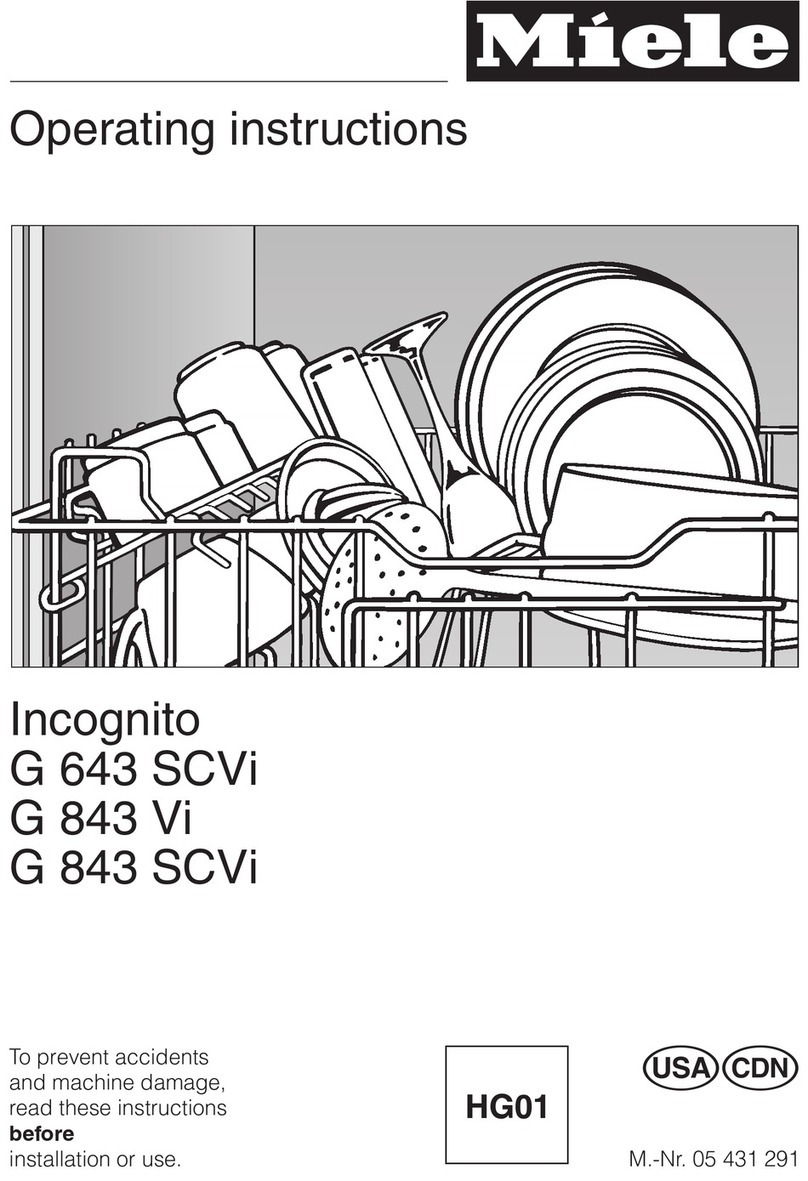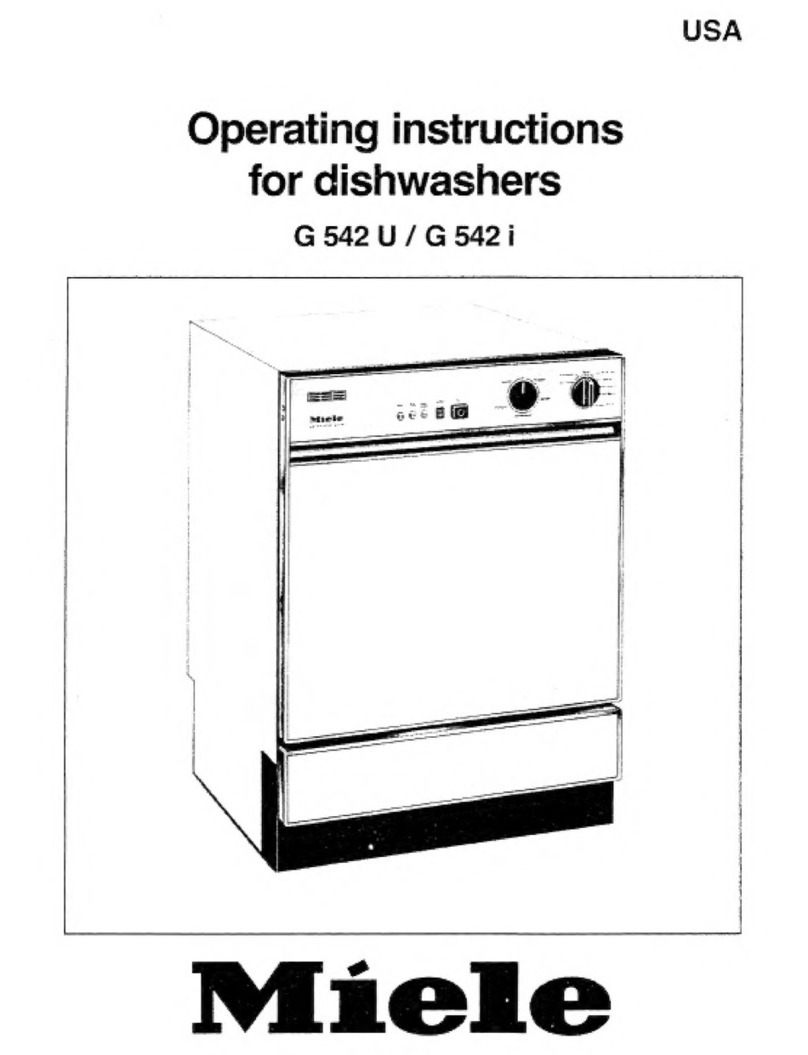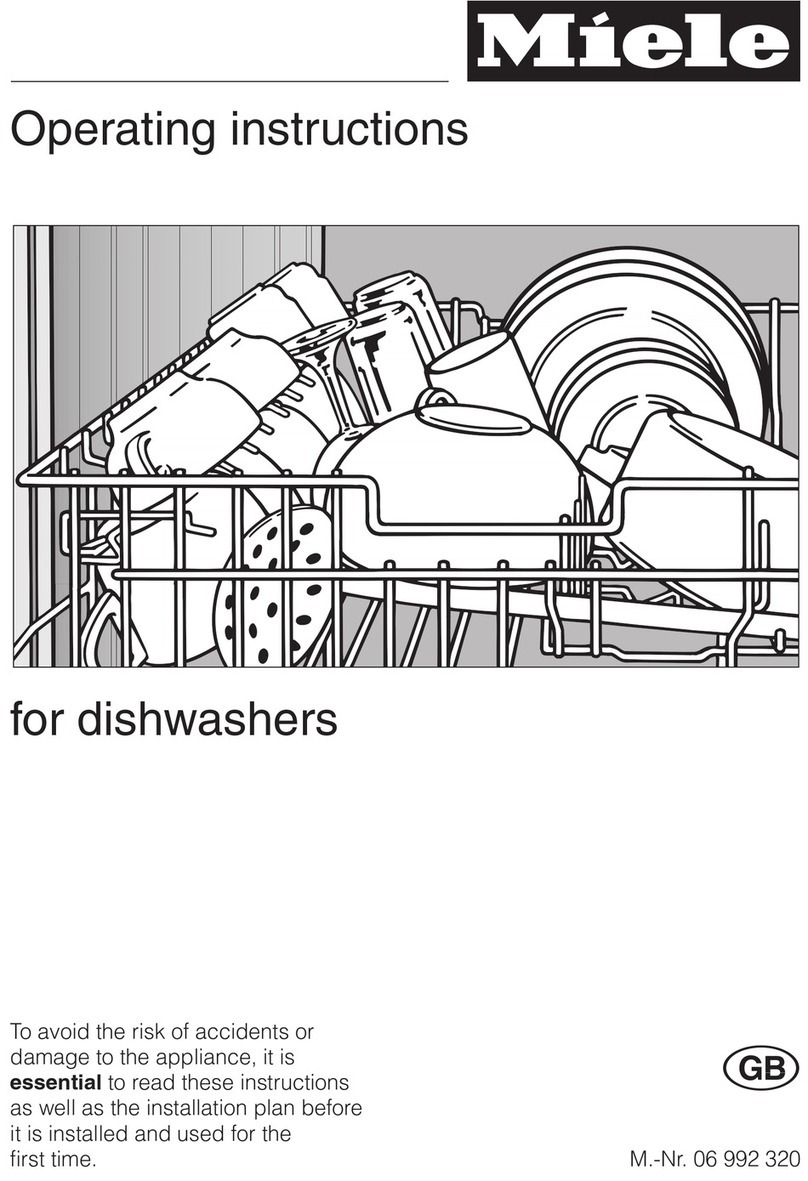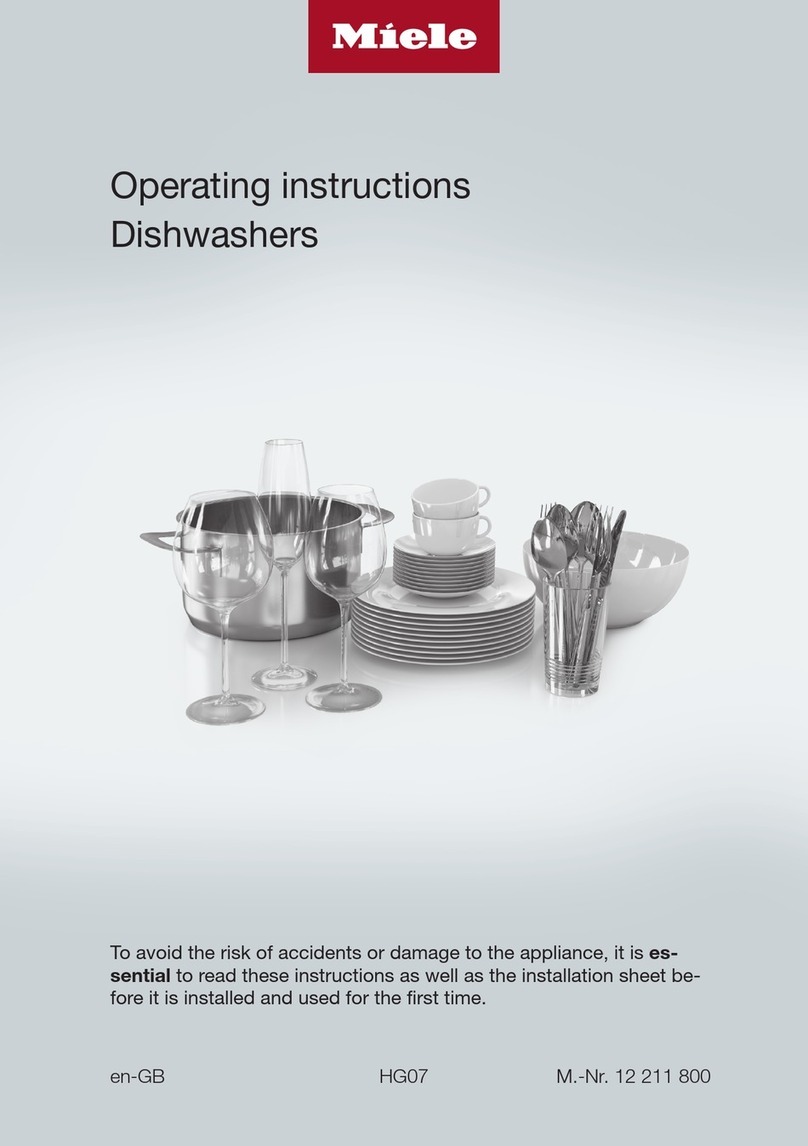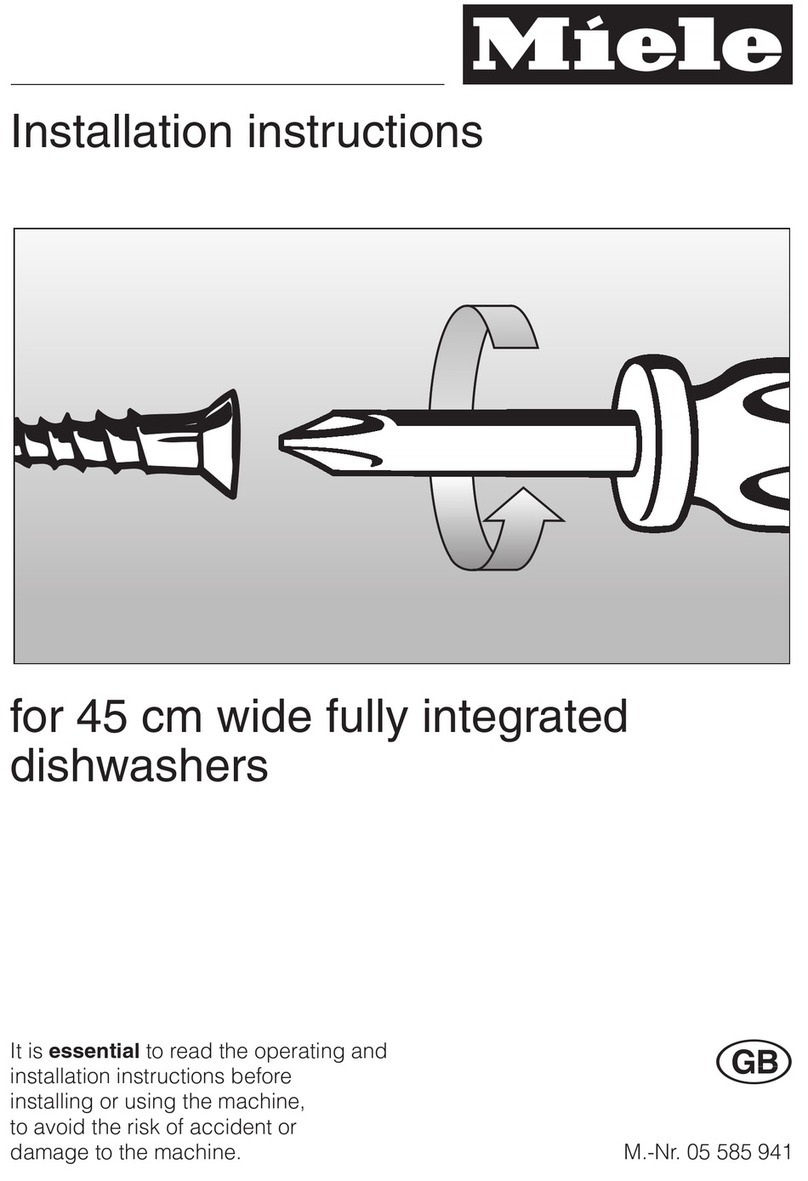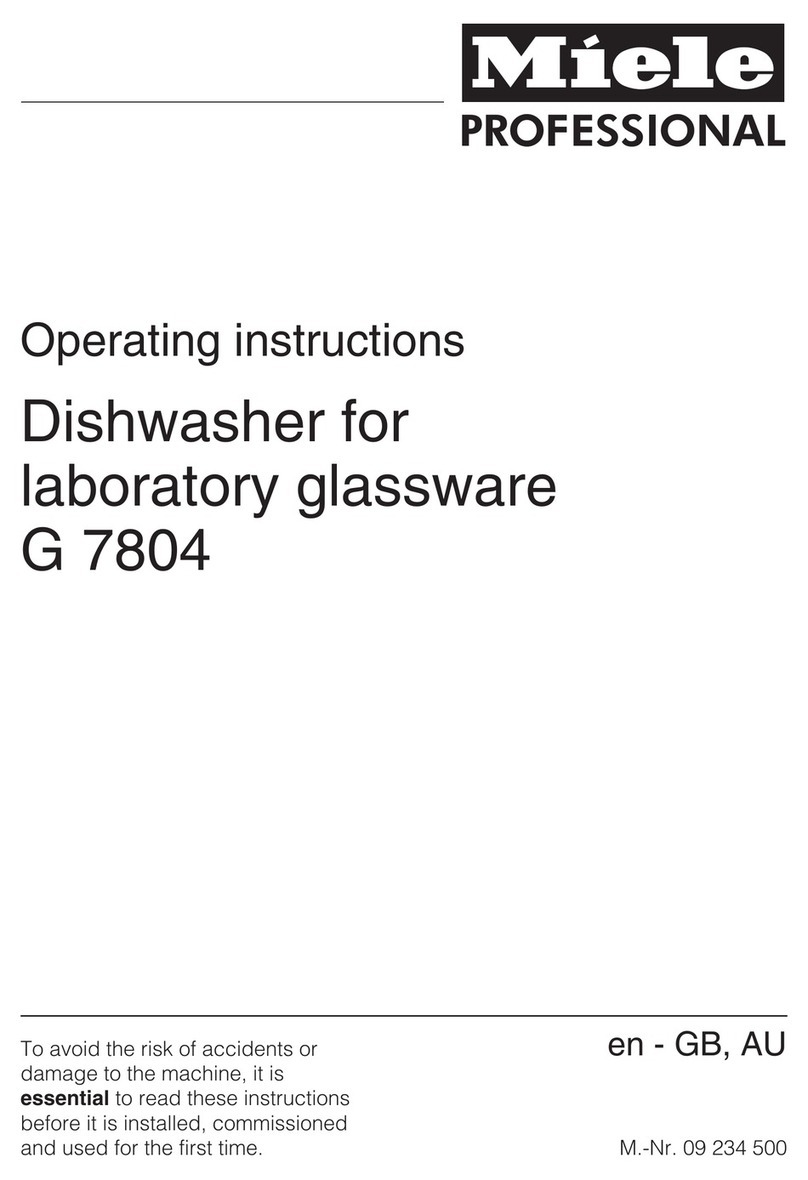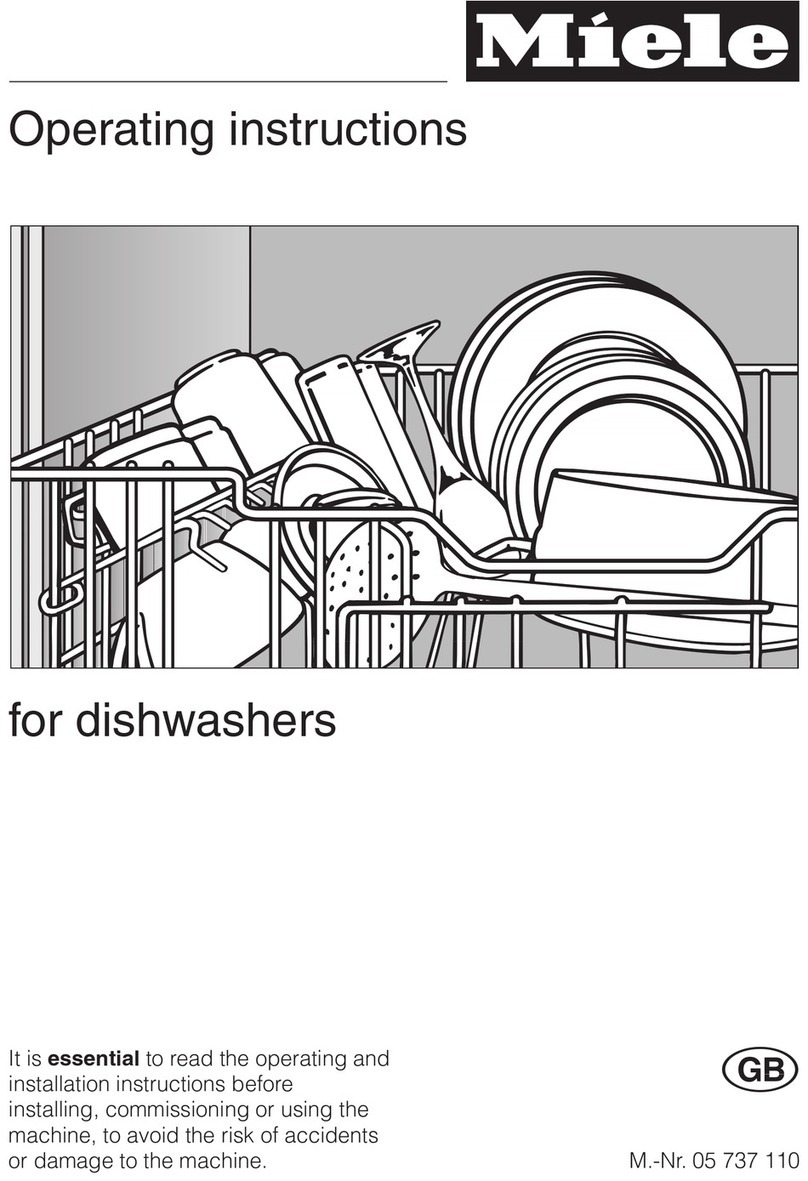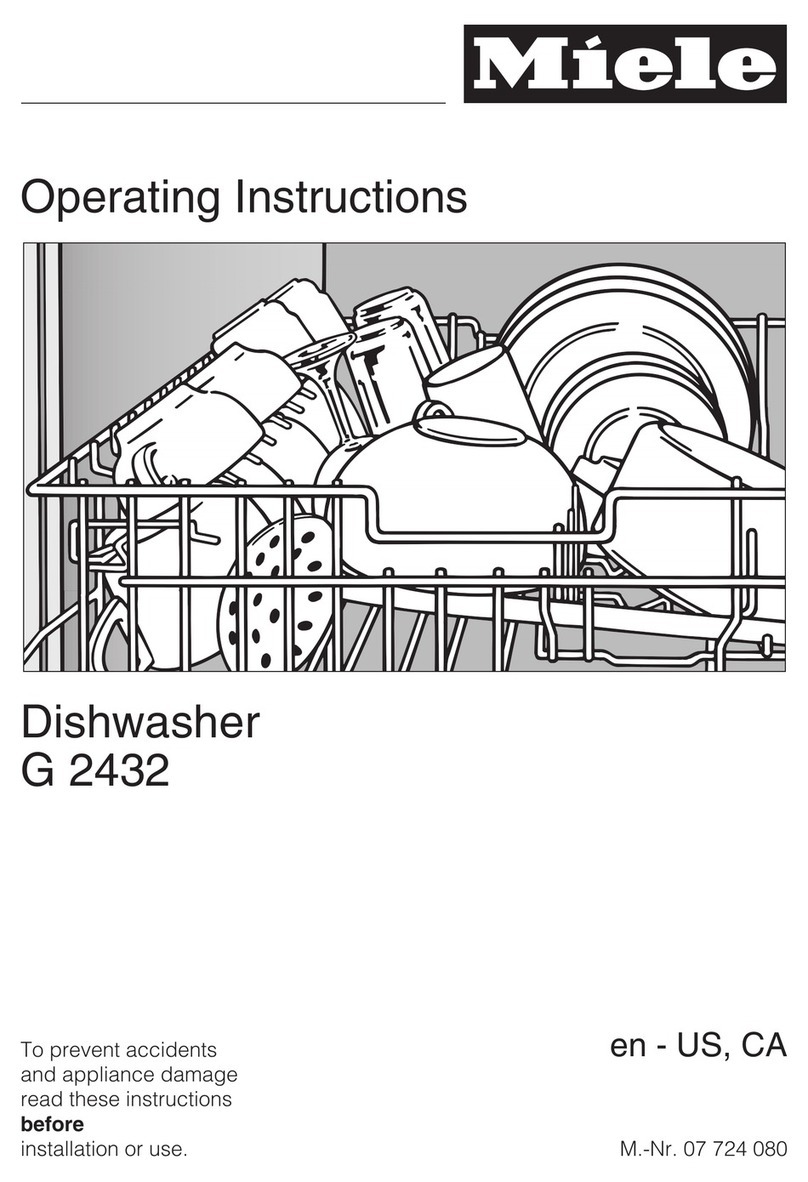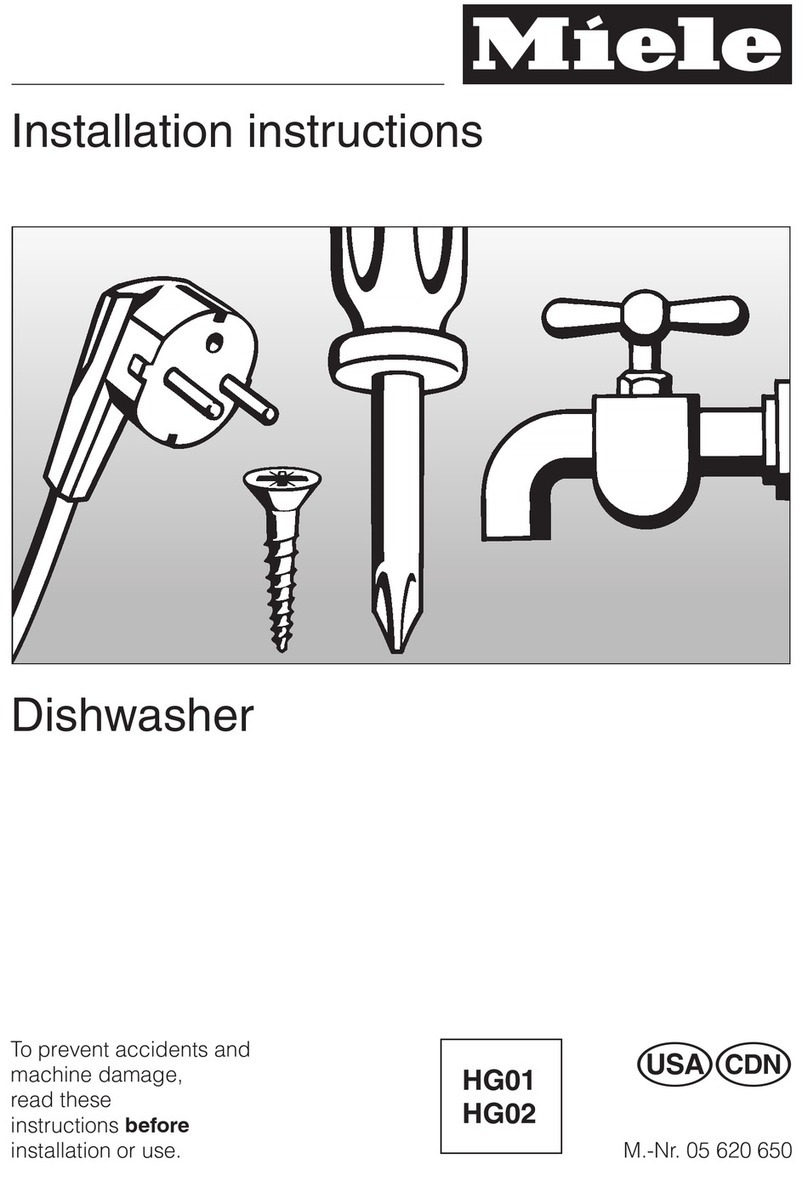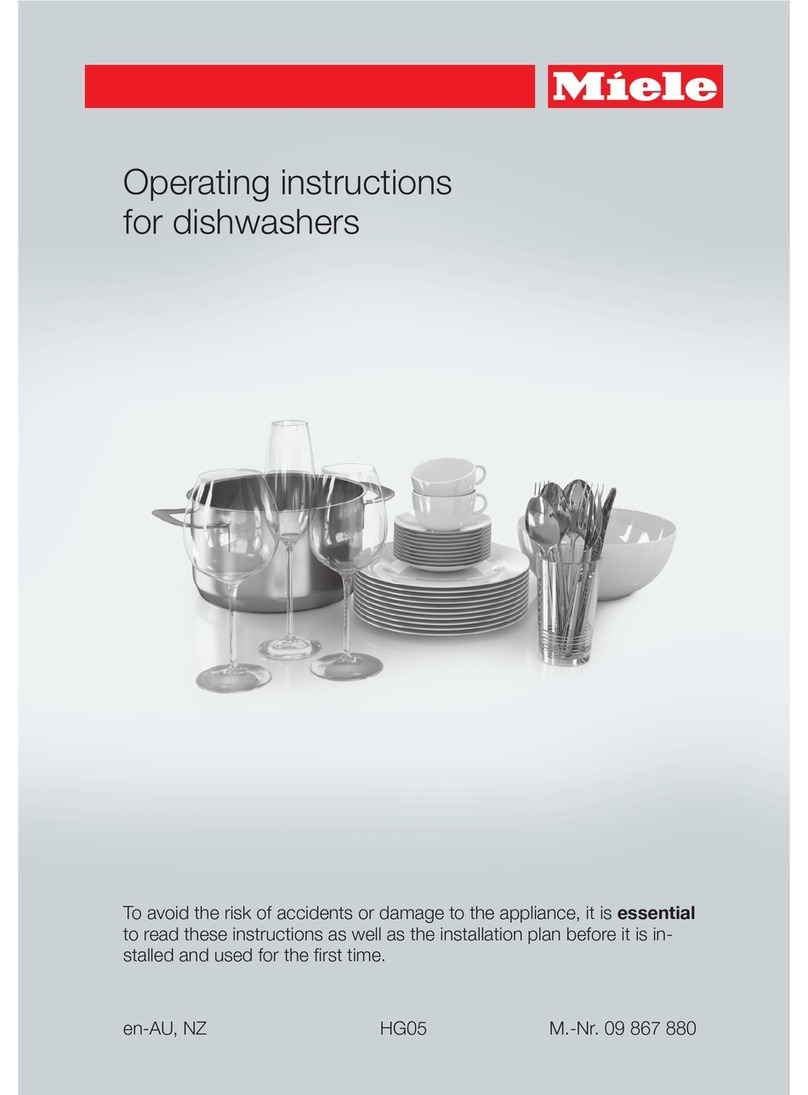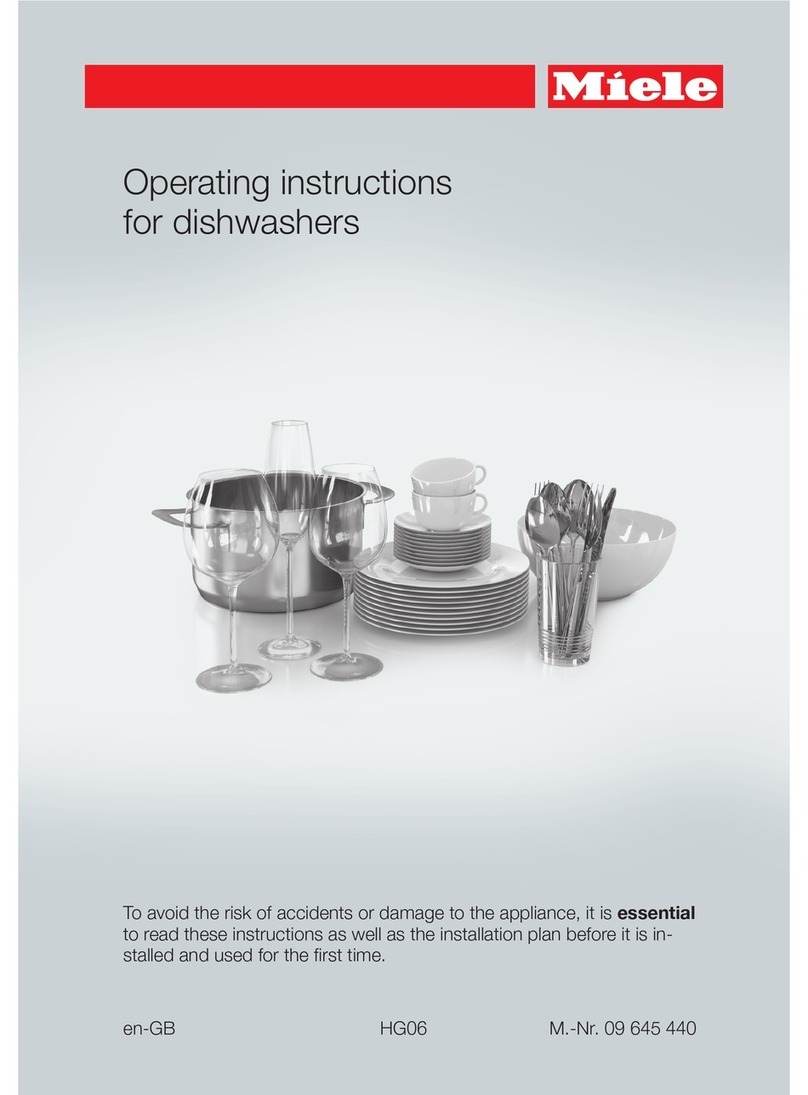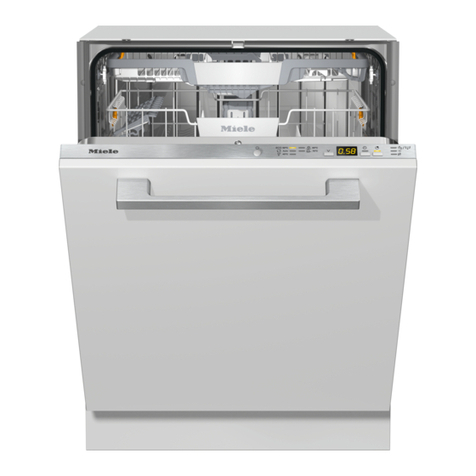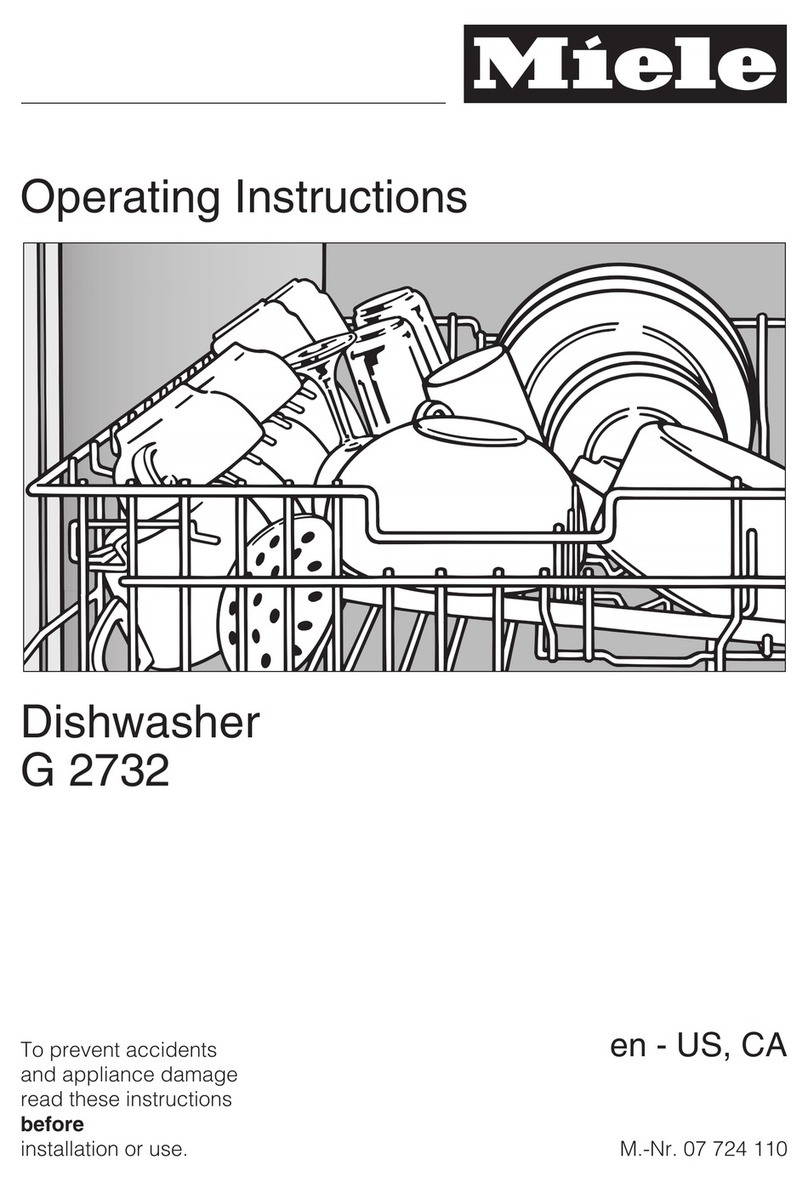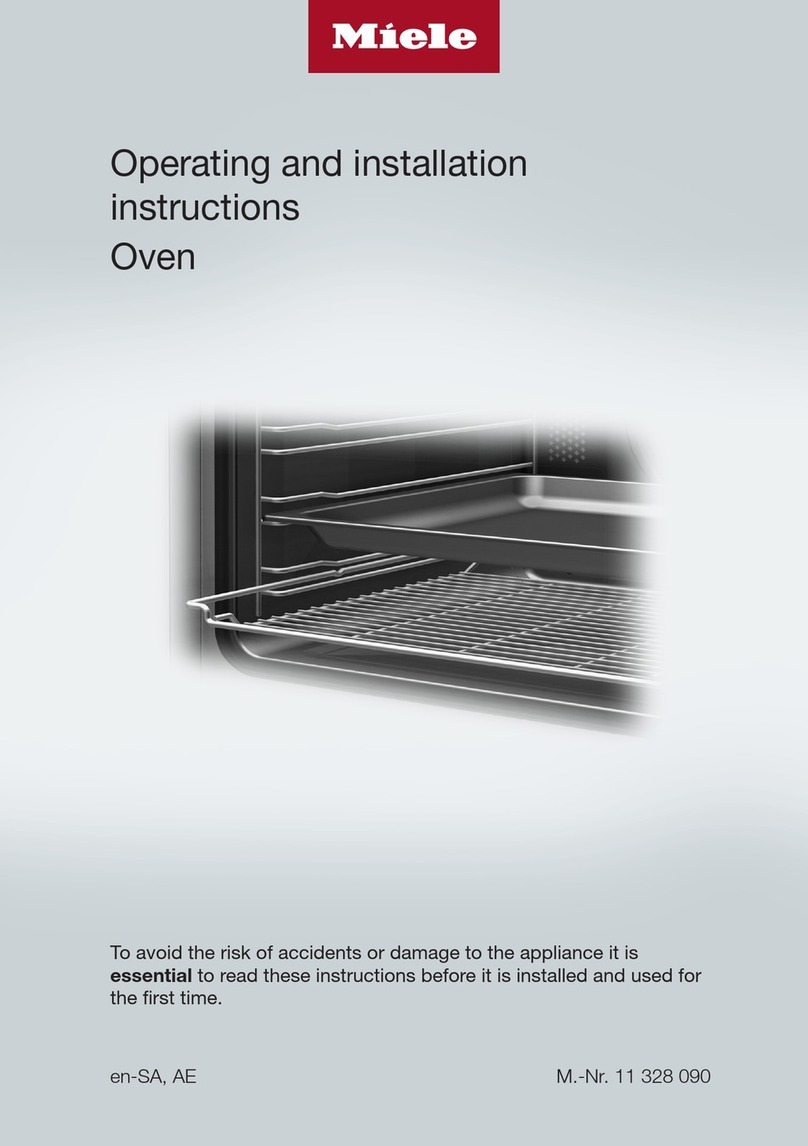The following points should be
observed to assist in maintaining
quality standards, for critical lab
glassware and to avoid damage to
the loads being cleaned.
If the cleaning result is subject to
particularly stringent requirements
(e.g. chemical analysis, specialized
process), a regular quality control test
should be carried out by the user to
ensure that required standards of
cleanliness are being achieved.
Be aware of the high risk when
interrupting a wash cycle and
opening the door, if toxic or chemical
substances could be present in the
wash water. Always check the seal of
the door and the function of the steam
condenser.
Use only Miele approved cleaning
agents with this machine. Use of
unsuitable cleaning agents could
adversely affect the components of the
machine. Damages resulting from using
unsuitable cleaning agents are not
covered by the warranty.
Pre-treating (e.g. with cleaning
agents) certain soiling, and
cleaning agents with a chemical
interaction can cause foam. For
pre-treatment and/or cleaning only use
low-sudsing detergents and
disinfecting agents which have been
approved by Miele. Suds can have an
adverse effect on the cleaning process.
When a chemical additive is
recommended, the manufacturer of
the machine takes no responsibility for
the effect of the chemical on the items
being cleaned. Please be aware that
changes in formulation, storage
conditions, concentration, etc., which
may not be publicized by the chemical
producer, can have a negative effect on
the cleaning result.
When using cleaning agents and
specialized products it is essential
that the manufacturer’s instructions are
followed. Only use the product for the
application described by the
manufacturer to avoid any material
damage or the occurrence of strong
chemical reactions.
The machine must only be
operated with water and the
recommended cleaning agents.
Organic solvents must not be used in
the machine, as there is the danger
under certain circumstances of
explosion. Although this is not the case
with all organic solvents, other
problems could arise with their use,
e.g. damage to rubber and synthetic
materials.
IMPORTANT SAFETY INSTRUCTIONS
6
